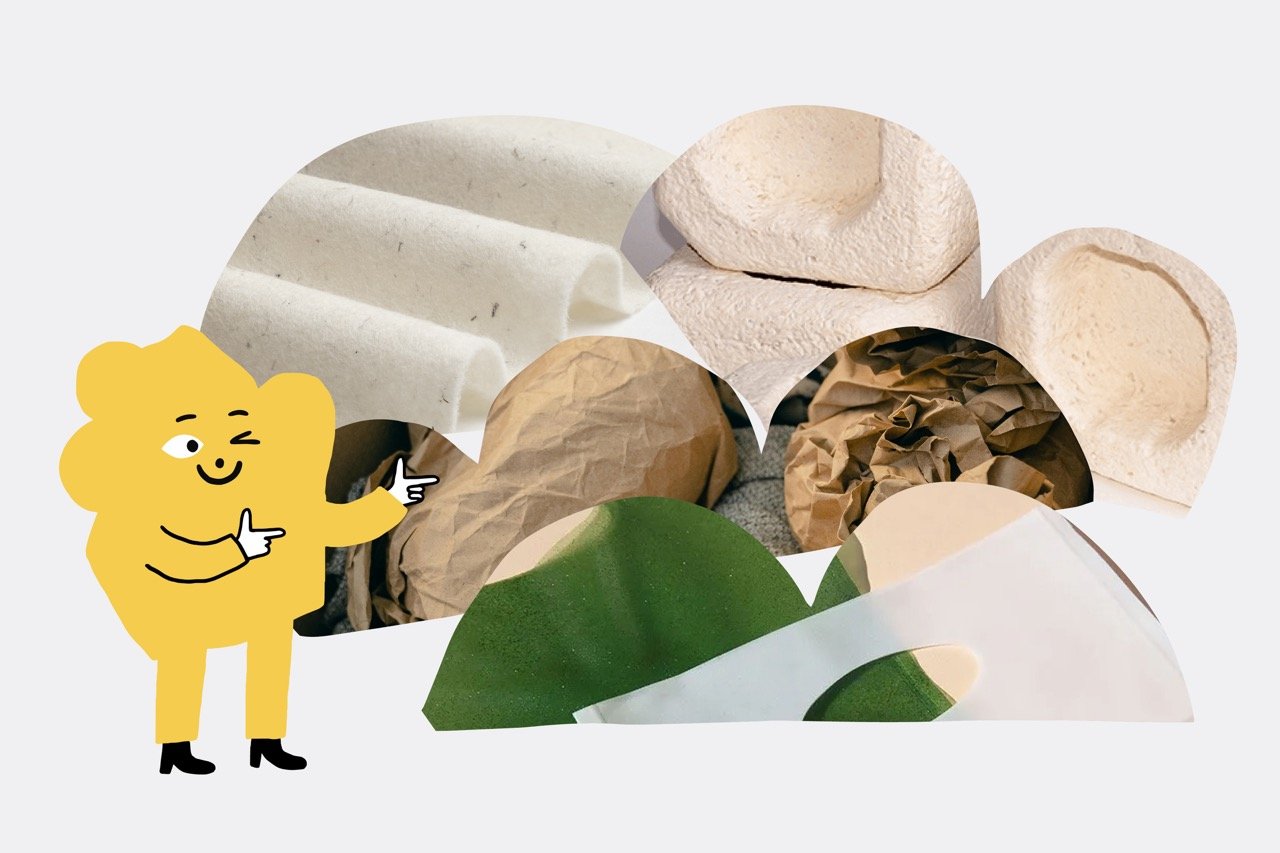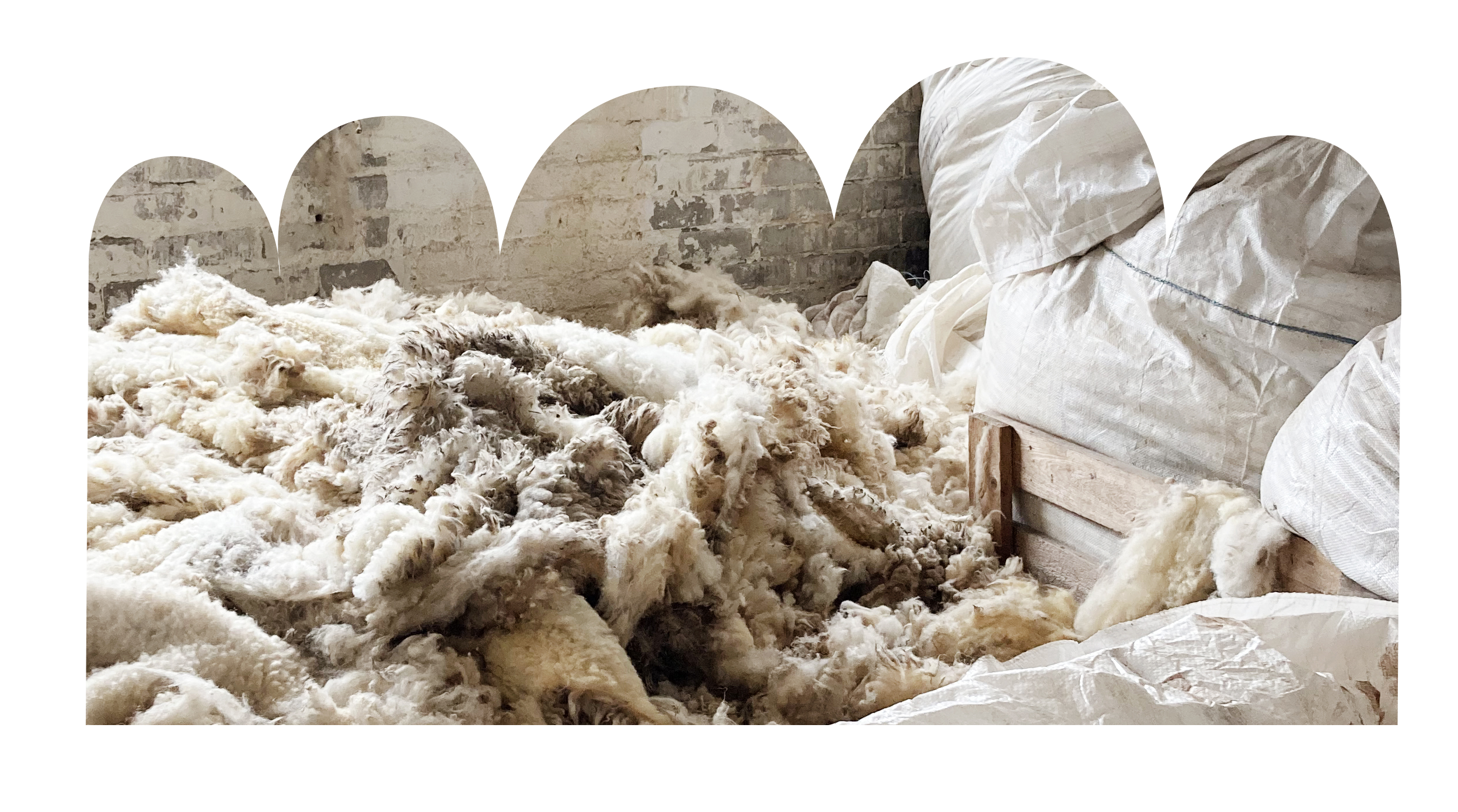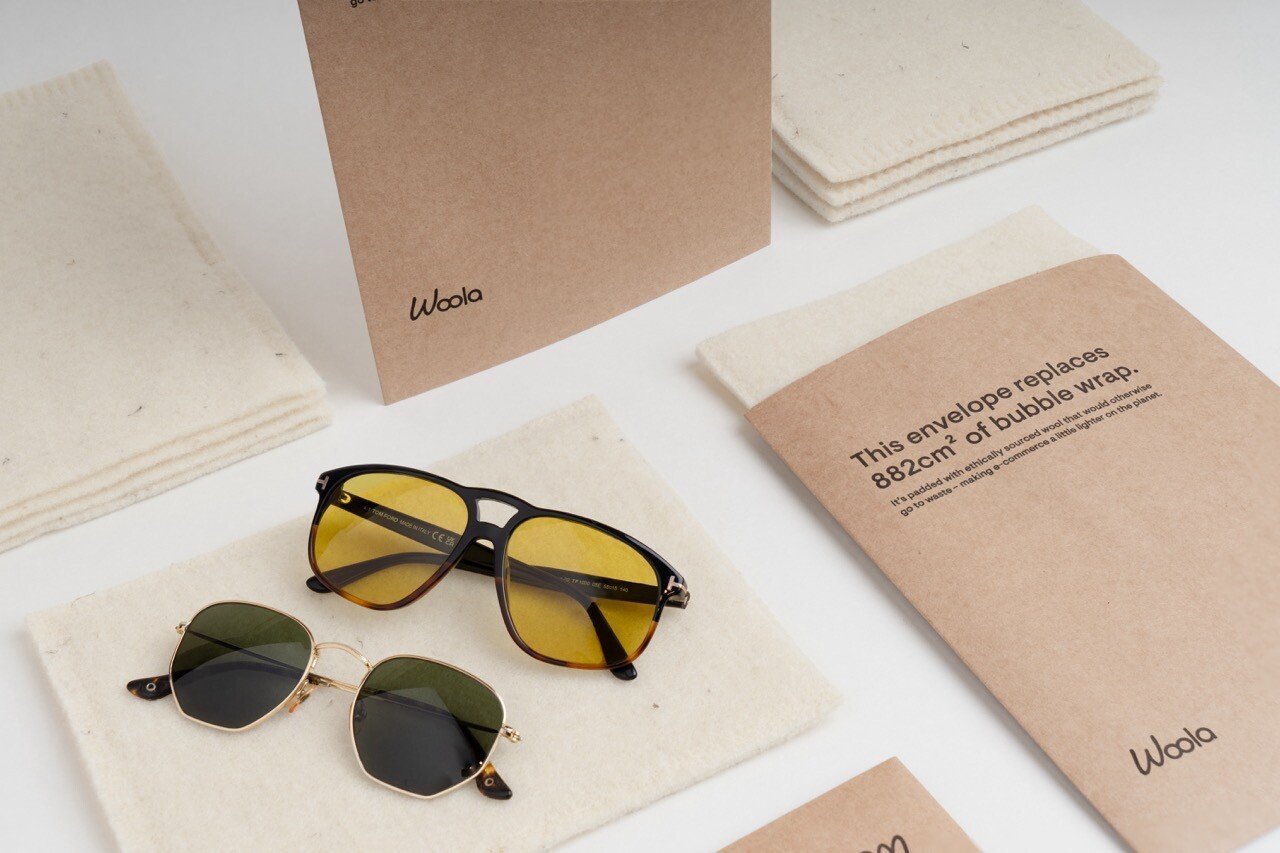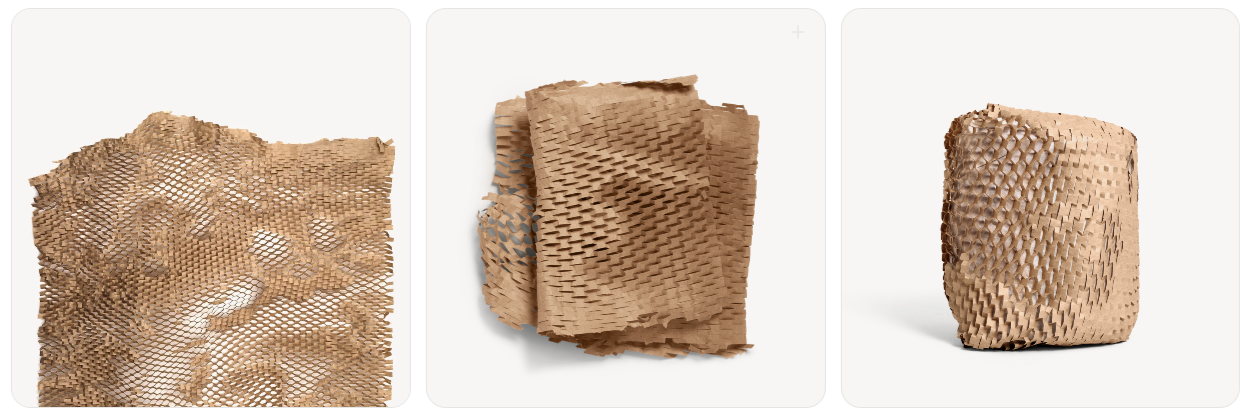What are sustainable packaging materials? (+ Top 4 examples)
Type "sustainable packaging materials" into Google and you'll find an overwhelming list of options — recyclable, compostable, home-compostable...
But what about the materials used to make the different types of packaging?
To fully understand the sustainability of a packaging solution, look at how the raw material is sourced, processed, and discarded.
Put simply, all sustainable packaging materials are:
Renewable
Reusable
Free of petrochemicals
Recyclable (and actually get recycled)
Degradable (decompose with microbial activity much faster than plastic)
While all packaging has an impact – big or small – sustainable packaging materials are lighter on the planet.
As we like to say, perfect packaging doesn’t exist. But better packaging does.
Now, dive deeper into the topic that you’re most interested in — click below and hop to the relevant section.
What are sustainable materials for packaging?
Types of sustainable packaging materials
Moving forward: sustainable packaging materials in your day-to-day
Key takeaways
The most sustainable packaging materials are made of renewable materials, free of petrochemicals, reusable, easily recyclable (and actually get recycled), and biodegradable.
Some of the most sustainable raw packaging materials available today are paper, wool, and even mushroom packaging.
For the packaging industry to change, it must switch off its single-use mindset and adopt a circular approach to material usage.
Sustainable packaging materials offer businesses a way to lessen their impact on the planet while aligning with modern consumers.
What are sustainable materials for packaging?
In our dictionary (and the UN’s!), sustainability is something you can do repeatedly, indefinitely, without ever running out of resources. Sustainable materials, therefore, are those that meet our needs today, without depleting natural resources or compromising future generations.
In the context of packaging materials, the first key feature is that the raw material is renewable. This means that it is sourced from reservoirs that are replenished or regenerated over time.
Secondly, sustainable packaging materials are reusable. As the name suggests, this type of material can be used time and time again without significantly diminishing in quality. There’s no magic number for how many times, but our advice is to reuse it as many times as you can.
Thirdly, they are recyclable and actually get recycled. This means that the material should be processed through recycling systems – not just in theory, but in practice.
Finally, sustainable materials degrade with microbial activity in days or months, without leaving behind harmful residues like microplastics.
A truly sustainable raw material ticks all of these four boxes. Of course, sustainability does not end with the material itself — it’s important to consider its impact throughout its life (from extraction to processing, transportation, usage, and disposal). But the key characteristics of the raw material are covered with those four.
After all, everything we do has an impact, so it’s our mission to have a minimal one.
Today, the packaging industry is heavily reliant on plastics, which rely on finite resources (fossil fuels), and emit greenhouse gases at every stage of their lifecycle.
Replacing plastic packaging with sustainable materials can help prevent the worst climate doomsday scenarios from becoming a reality and help with maintaining ecological balance.
By replenishing the planet’s resources, we stabilise its natural cycles. Simply put: consume, but restore.
Not perfect - but much better.
Types of sustainable packaging materials
We’ve handpicked four sustainable materials to highlight here: wool, paper, mushrooms, and seaweed. Below, we’ll look at:
how these raw materials are sourced
how they’re turned into packaging
what are the key characteristics of each material and
what does the end-of-life of such packaging look like.
Wool
Source: It’s a little-known fact that hundreds of thousands of tons of wool go to waste each year — 200,000 tons every year in Europe alone. That’s enough to cover 5602 football fields with a 4-meter tall layer of wool.
Wool is a naturally high-tech material. It has high thermal resistance, elasticity and the ability to absorb moisture. While humans have used sheep wool to create textiles for thousands of years, the emergence of synthetic fibres in recent history has led to certain types of wool being left unused.
Simply put, the textiles industry no longer uses coarse wool, as it’s too rough on human skin. Not a lot of other industries have found a need for coarse wool, but a handful of companies have invented ways to upvalue waste wool and turn it into something useful — like insulation in houses or protective packaging (yep, Woola is one of them!).
Process: When it comes to creating something out of this waste wool, the first challenge is the lack of an ethical, vetted supply chain. So, we at Woola created our own standard for sourcing wool: ‘Know Your Wool’ (KYW). In short, Woola does not source from factory farms; we use only use leftover wool from free-to-graze sheep on farms in Estonia.
Once the wool is sheared (carefully removed from the sheep’s body), it is then industrially washed, processed, and distributed for manufacturing.
Key features of wool as a packaging material
Shockproof
Wool fibres have a natural elasticity and resilience, allowing them to compress and rebound when pressure is applied. It provides a cushioning effect that is just perfect for absorbing shocks and impacts during transportation, making it the ideal sustainable packaging material for delicate goods. (Our clients think so too!)
Insulation
Another phenomenal property of wool is its high thermal resistance, allowing it to regulate temperature fluctuations and provide (temporary) protection from temperature extremes.
P.S. With heat waves becoming all too common in Europe, we put wool packaging to the test ourselves – see here for results.
Pictured: Wool Envelopes
Main uses of wool as a packaging material
Bubble wrap alternative
The sad truth about bubble wrap is that it’s rarely recycled, even though 200 million Americans use at least one roll or box in 6 months. There aren’t many sustainable alternatives to bubble wrap out there – but wool’s features make it one of them.
Wool packaging does everything bubble wrap can do and more – it looks good and high-quality, it’s easily reusable and it actually gives back to the earth at its end of life.
Thermal packaging
Wool is also used in thermal packaging, which is a whole thing on its own. Companies like Puffin Packaging and WoolCool are doing exciting things with packaging for food and pharmaceuticals in this space.
End-of-life of wool packaging
Packaging that is made of 100% wool can be home-composted, but make sure to verify its certifications before doing so. Once you’re sure of its composition, it can be as simple as burying the wool in the soil, adding it to your home compost, or getting creative with reuse.
If the wool has been combined with other materials, it may not be compostable. When in doubt, look to the packaging manufacturer for end-of-life information.
Paper
Source: For paper to be considered a sustainable packaging material, it must be sourced from sustainably managed forests or recycled materials. Luckily, there are very established certifications like FSC that make it easy to spot unsustainable practices such as deforestation, and also consider preservation and local community rights.
Process: Once the wood is sourced, it is then processed into pulp through mechanical or chemical methods*. The pulp is mixed with water, formed into sheets on a wire mesh screen, and dried to create paper. This paper can be further processed into various sustainable packaging materials, such as the ones detailed below.
*While mechanical processing produces lower-quality paper compared to chemical pulping, it does not require harsh chemicals like sulphur compounds or chlorine, which can cause harm to human health and the surrounding environment.
Key features of paper as a packaging material
Versatility
There’s a reason why paper packaging is so common. There’s so much you can do with it! It can be moulded into boxes, envelopes, cartons, and wraps, accommodating different shapes, sizes, and product types.
Strength and durability
When you think of paper, you may think of a flimsy material that tears easily. But paper can be engineered to be surprisingly resilient — just take a look at these examples:
Corrugated cardboard (used a lot in ecommerce)
Paperboard tubes
Kraft paper bags
Main uses of paper as a packaging material
As a multifaceted sustainable packaging material, paper has a range of uses:
Corrugated cardboard is a go-to choice for ecommerce
Wrapping paper is popular for gifts and decoration
Air-filled paper cushions are often used for void-filling
Honeycomb paper is used to wrap glass bottles
The most common paper packaging we see today is indeed from trees, but there are efforts to explore alternative renewable packaging materials for paper production, such as agricultural residues (e.g., wheat straw, sugarcane bagasse) and non-wood fibres (e.g., hemp, bamboo).
We love seeing waste streams being repurposed, minimising the extraction of raw materials, and maximising resource efficiency.
End-of-life of paper packaging
Paper is one of the best recyclable packaging materials. Most types are easily recyclable, as long as they aren’t contaminated with food or other substances that compromise the quality of the recycling process.
Here are some things to look out for when considering the recyclability of paper packaing:
Bright colours (unfortunately, the more the paper is dyed, the harder it is to recycle)
Plastic liners or inserts
Foil
You can also compost your paper packaging. You can even shred the paper packaging into smaller pieces to speed up decomposition. Just make sure to remove any non-compostable elements such as tape, stickers, or plastic inserts.
Just like wool, paper packaging breaks down into nutrient-rich compost.
Mushrooms
Source: Mushroom packaging made of mycelium (a fancy word for mushroom roots), and typically mixes with another ingredient or two. For example, the industry-leading Mushroom® Packaging by Ecovative uses mycelium (right on the picture below) and hemp hurd (left on the picture below), an agricultural waste product.
Process: The mixture of raw materials for making mushroom packaging is then placed into moulds of various shapes and sizes, where the mycelium grows and binds the materials together during an incubation period. The process of growing the packaging parts (yes, growing — not manufacturing!) only takes a couple of days. It is then heat treated to stop the growth process. So no, it isn’t alive when you use it as packaging!
Key features of mushroom packaging
Insulation
Mycelium's porous structure makes it extremely effective at temperature regulation. It’s made of a network of interconnected filaments called hyphae, which create small air pockets within the material. These air pockets act as insulators, reducing heat transfer through conduction.
Custom design
Since mycelium-based sustainable packaging is grown to order, it’s possible to design custom packaging solutions to fit a product.
At the same time, it can only hold items that fit into the mould, so is not as flexible as a raw material like wool and paper.
Main uses of mushroom packaging
Its unique thermal properties are similar to that of wool, making this sustainable packaging material a popular choice for temperature-sensitive items, such as food and wine. According to Ecovative, it can perform similarly to styrofoam coolers.
End-of-life of mushroom packaging
The wonderful thing about mycelium-based packaging is that it’s usually made from only organic materials. These components break down naturally through microbial action, returning to the earth without leaving harmful residues behind.
This typically means it can be composted at home (but we’ll still always recommend verifying this with certifications), delivering valuable nutrients back into the soil.
Seaweed
Source: Seaweed grows abundantly in marine environments without the need for land, freshwater, or fertilisers. It is a highly renewable packaging material, growing up to one meter per day under optimal conditions.
If the seaweed is farmed sustainably, it provides a host of benefits, including nutrient cycling and enhancing biodiversity. Amazingly, if it were to replace all single-use plastic, only 0.066% of the ocean would be needed.
Process: By extracting the gelatinous part of the seaweed, innovative packaging manufacturers like Notpla and Sway are able to create a compostable, marine-safe alternative to plastic. Removing this part leaves behind fibres and biomass that can be turned into materials similar to paper and items like disposable cutlery.
Key features of seaweed packaging
Versatility
There are over 12,000 species of seaweed. Among them, some possess fibrous structures by robustness and resilience, while others have a finer composition. Research is still in its early stages, and we’re excited to see what other sustainable forms of packaging will spring from it!
Edibleness
This is definitely a benefit that’s unique to algae as a packaging material. Imagine being able to eat your packaging after use. Pretty cool, right? Brands like Notpla have used seaweed extracts to create edible packaging solutions such as water capsules and condiment sachets.
Main uses of seaweed packaging
With the wealth of different species, the opportunities are endless. Seaweed has been transformed into various sustainable packaging solutions, including:
Image source
End-of-life of seaweed packaging
Like with all other sustainable packaging materials, it’s important to verify whether seaweed-based packaging is compostable before adding it to your home compost.
Companies like Notpla and Loliware make it clear how to discard their packaging. Make sure to always look for this kind of information before throwing it away.
In the case of seaweed packaging that is home-compostable, adding it to your composting system returns valuable organic matter to the environment, closing the loop in the natural cycle of materials and nourishing the surrounding organisms.
Moving forward: sustainable materials in your day-to-day
The first step is keeping an eye on the packaging you buy, use and receive (we do too). Being mindful of the materials will help you use, reuse and recycle the packaging in the best possible ways. Here are some tips to get you started:
Carefully examine the materials. Is it made of a renewable material that replenishes over time, rather than finite resources that eventually run out? Has it been harvested responsibly?
Check for end-of-life instructions and certifications. Can you add it to your home compost? Can you recycle it easily, curbside or through your local council?
Know a business that needs to switch?
For businesses, sustainable packaging materials offer a way to lessen their impact on the planet while aligning with modern, conscious consumers.
If you’re with a business that wants to stand out in the sea of plastic and cardboard, you can request Woola packaging samples — they’re free for companies that are looking to improve their packaging!











